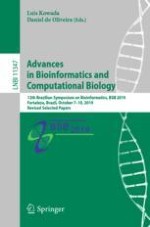2020 | OriginalPaper | Buchkapitel
MDR SurFlexDock: A Semi-automatic Webserver for Discrete Receptor-Ensemble Docking
verfasst von : João Luiz de Almeida Filho, Jorge Hernandez Fernandez
Erschienen in: Advances in Bioinformatics and Computational Biology
Aktivieren Sie unsere intelligente Suche, um passende Fachinhalte oder Patente zu finden.
Wählen Sie Textabschnitte aus um mit Künstlicher Intelligenz passenden Patente zu finden. powered by
Markieren Sie Textabschnitte, um KI-gestützt weitere passende Inhalte zu finden. powered by
